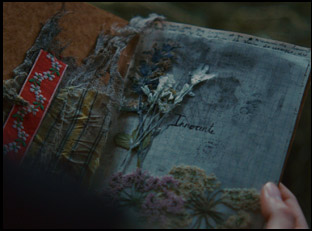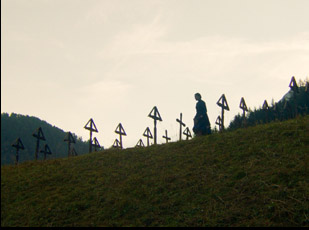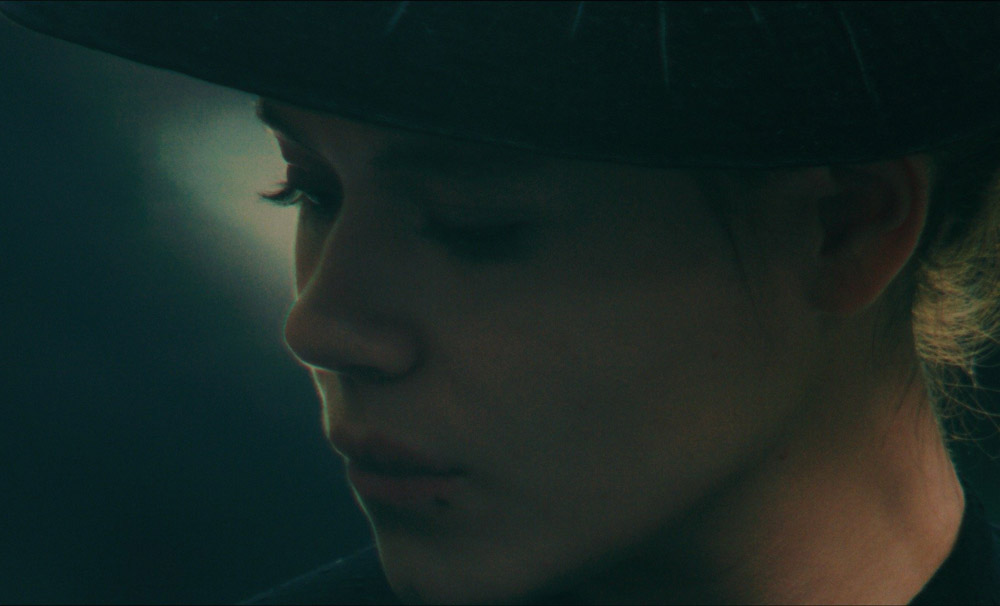Carmen Jaquier wasn’t planning to film “Thunder” in the Swiss Alps, but there was no forest she could find that would be far enough removed from the sounds of modern society for her drama set at the turn of the 20th century to her liking on flat land.
“We realized that in Switzerland, you’re always connected with a huge highway [where there’s] noise and humans have built on every landscape, so we had to finally to go up and up and up to find the place that would really fit with the film,” says Jaquier.
Jaquier found the heavens for her absorbing feature debut, though it can feel like hell for Elizabeth (Lilith Grasmug), the 17-year-old at its center who was dispatched by her family five years earlier to become a nun and is called back to their humble farm in the hills upon learning of her sister Innocente’s death. When her father initially sent her away to pray for the family, she has to wonder whether she was doing it wrong, among other nagging questions she has when she returns, none of which she can find easy answers for when no one in the family will speak Innocente’s name and after planning to take vows of celibacy, she is thrust into a world of sexual desire when a trio of lusty young men roam about town making no secret of their sexual urges and she debates giving in to her own. If it seems as if God isn’t around to guide her, Elizabeth lets herself be led by the journal that Innocente left behind, full of detailed passages about her own torment as she grew out of adolescence in the parts that weren’t streaked by tears.
It isn’t only Innocente’s words that have a hold on Elizabeth as “Thunder” progresses, with Jacquiar turning the film into a full-body experience where one can feel the breeze catching her hair and the tall grass grazing her legs at any given moment, making a spiritual search feel tactile when chasing after a sister who is no longer around, she starts to understand more about who she is herself. Beyond Grasmug’s beautifully expressive turn as the quietly contemplative young woman, the film gives shape to the abstract yet powerful forces that influence her, from Innocente’s handwritten journal, adorned with dried flowers and intricate sketches of her fantasies, to the pull of her natural surroundings, summoned with intricate sound design and stunning views of the landscape where it feels like the pastures can go on forever, but Elizabeth’s own view of the world is only starting to expand.
Following its premiere at the Toronto Film Fest last year, “Thunder” deservingly became Switzerland’s official selection for this year’s Best Foreign Language Film prize at the Oscars and as the film is arriving abroad this week to kick off its theatrical run at the IFC Center in New York, Jaquier spoke about the engrossing drama, the personal inspirations behind it and how she and Grasmug collaborated on a character that invites the audience so much into her perspective.

When my grandmother died, I got the diaries from my great grandmother and she was writing every day to God for 30 years, so I just tried to find something about her in her writing, and I realized how alone she was [in spite of the fact she had a] husband and family and friends and kids and how she could find the strength to go through her life in faith and in God, to fight against fears that she had and to express herself. So then I realized, “Okay, maybe I will need to do some research about women at this time, at the end of 19th century on farms and women who couldn’t express themselves and the way they choose to be able to move their society [forward].” So that was the start of the writing of this film.
You’ve made a reference to the aesthetics when saying you wanted vibrations, but that also seems like it also might be an idea for the rhythm of it and how it would unfold. How did that sensation guide you in figuring out how to tell the story?
Vibrations for me are just connected to life and to try to understand who you are, where you’re coming from and how you can fight for more liberty because it’s like the way we are going through life. Vibrations, it’s the blood into your veins, like love or desire, butit could be also a word to express a connection to a faith or it can be. For me, it was a huge guide during the writing and shooting [of this film] and to imagine how the aesthetic works around the film. It was always to reconnect with this word [in terms of] colors and even the connection between the actors and between the members of the team, [asking] what would mean this word for everybody? It’s to stay in movement, always asking your questions. You don’t have the answers, but you’re always learning, so it was connected to each part of the fabrication of the film.
What sold you on Lilith to play Elizabeth?
She’s a strong young woman, and I think she was the link between me and the character I wrote because I had the feeling that it’s not me who brought her to Elizabeth, but it was more her bringing Elizabeth to me and giving me some clue about her. She’s really a [psychological] person, so she was really working to be able to express what she’s thinking [in silence], and it’s not easy for an actress to express like this. She had a diary during the shooting that she wrote in, even before the [production], about her character and she created a huge world for herself. Then she had these experiences to [reference] for herself when we were shooting, and [there’s] this silence that you can explore with her face. She was really working on it for the whole shoot.

I made the diary, and I put something of myself in this diary when I created it, even if the story is not my story. I put a lot of myself everywhere, but building this diary myself with my inks, with collected flowers and drawings and ideas, and to go really through the character of Innocente, was a huge part of my work to understand the characters and to be able to transmit it to the actors. You have few ways to go into the film. You can work with your brain, but you can work with your body or go through your film with music, and making this diary was another door into the film that I got.
As a viewer, one of the ways I found my way in was with sound. What was it like to summon the inner lives of the characters through the environment as you do?
Yeah, that’s a long and deep work in between the sound editor and the composer of the film. We had the chance to be able to work before the shooting, and then [the composer] also created [the sounds of] winds for the edit, [which we] didn’t use that much, but he created winds for each part of the film and because I would work in architecture [to create a sense of Elizabeth’s experience] in between the spaces, like where is the house [in relation to how she has to go to the place from her childhood with her sister, to the place with the boys, and then the village, he created like sounds to get a sense of this different places and to [summon] the feelings there. So we worked with him and then he worked also with the sound editor [who] went back to the place to record new sounds – really pure sounds of the wood. It was a really precise process and I think it’s a huge part of the movie. When I showed the film with people living in this region in Switzerland, and it’s the story of their parents, they told me how they had the smells of this time because of the sound. They could really live this life again and they smell it.

Inside the house, it was with artificial light, but the rest of the film was natural light and we had this [idea of the light being] narration during the shoot. Scene by scene, it was a question of “Okay, we start the film with something more defined, not blurry and super straight and strong in the chiaroscuro and then we will go to something more experimental and [eventually] the artificial light will disappear, but it will reveal something else like the material of the camera, so it was like a narration in addition to the narration of the film. It was the narration of the light.
What’s it been like getting this out into the world?
It’s crazy. I think I will need a moment to realize [what’s happened with it], but I know the chance I have, and it’s really powerful to see your film through the eyes of the others. I don’t think about the audience when I’m working, so I do what I really want to do. But now it’s really for the audience, and to be able to share the film with people around the world from different culture, they’ve [allowed me] new views on the film and even new understanding. It’s so deep, and I realized how this film can talk to everybody – an American person, a South Korean person, a Toronto person, and this is really crazy. I couldn’t imagine that before, and this experience gave me this trust in cinema and stories because I really did what I want. I was really free, and it’s powerful to think that you can be free and move so many different kinds of people.
“Thunder” opens on October 25th in New York at IFC Center and November 10th in Los Angeles at the Laemmle Glendale.




